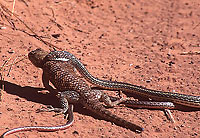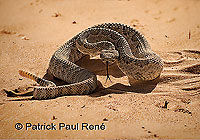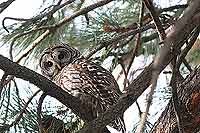 Try this one. Say the word “butterfly” to someone and note their response. Probably somewhere between “ahh” and “beautiful.” Now repeat the experiment saying the word “snake” and see if they jump. Or cringe. When people tell me they are terrified of snakes, I tell the “you’d be lucky to see one.” Not many share my enthusiasm.
Try this one. Say the word “butterfly” to someone and note their response. Probably somewhere between “ahh” and “beautiful.” Now repeat the experiment saying the word “snake” and see if they jump. Or cringe. When people tell me they are terrified of snakes, I tell the “you’d be lucky to see one.” Not many share my enthusiasm.
But consider this. Snakes, which are reptiles, have been on the planet for millions of years. Due to their small size and fragile nature, snake fossils are less common than those dinosaurs that weighed thousands of pounds. But, fossils do exist and the rise of these serpents might also be tied to the rise of another successful group of post-dinosaur-era creatures: rodents.
 Not all snakes eat rodents, but many do. Of the different snakes that slither across the slickrock, there are several that are more common. Western terrestrial garter snakes, midget-faded rattlesnakes and gopher snakes are the big three, the ones that folks might encounter. Of this group, the rattlesnake is the only representative of the Viperidae or the Pit Viper family. And no matter what any guide says on a river trip, no matter what your buddies tell you when camping, rattlesnakes are not encouraged to coil up on your sleeping bag drawn there by the steady rhythm of your heartbeat. So stop sleeping on the roof of your car, but do zip up that tent door.
Not all snakes eat rodents, but many do. Of the different snakes that slither across the slickrock, there are several that are more common. Western terrestrial garter snakes, midget-faded rattlesnakes and gopher snakes are the big three, the ones that folks might encounter. Of this group, the rattlesnake is the only representative of the Viperidae or the Pit Viper family. And no matter what any guide says on a river trip, no matter what your buddies tell you when camping, rattlesnakes are not encouraged to coil up on your sleeping bag drawn there by the steady rhythm of your heartbeat. So stop sleeping on the roof of your car, but do zip up that tent door.
Snakes are slugs, not in the sense of being covered with slime, but in the sense that they spend much of their time doing nothing. Don’t their passive nature fool you, these snakes can strike with incredible speed when the opportunity presents itself. -cmyk.jpg)
Maybe part of the snake’s image issue is the forked tongue flicking in and out of their mouths. When the tongue extends, it passes through a small notch in the lip and the mouth does not need to open; this seems creepy to some. Receptors in the tongue’s tip pick up chemical particles in the air and these form a 3-D image to the snake of what or who is nearby.
Another sensory feature is the snake’s ability to pick up ground vibrations and determine a course of action. Of course, rattlesnakes may coil and rattle their tail in response; colloquially they are known as “buzzworms”.
Mimicking rattlesnakes, gopher snakes may also coil up and rattle their tail, although no noise will result. Named for their habit of exploring burrows and dining on pocket gophers, gopher snakes are constrictors that enwrap their prey before consuming them. But when irritated, the one-lunged gopher snake lets out a sinister hiss produced by air expelling past a special membrane on the epiglottis. Perhaps that is why they are in the genus Pituophis, which means “phlegm serpent.”
Garter snakes are more common along riparian areas where their ability to swim enables them to traverse this type of habitat. Slimmer and darker in coloration, these snakes choose to flee, over fighting, when trouble approaches. But they may bite if handled. 
All these snakes are predators, but that doesn’t eliminate them from the prey list. Red-tailed hawks, kit foxes, coyotes, raccoons, owls and others prey on these snakes. Some become roadkill, caught out on asphalt roads gathering heat from the black surface. Others fall victim to preconceived notions that all snakes are bad. Remember the old saying about letting sleeping dogs lie? That also applies to snakes. And by watching them, perhaps you’ll change your mind about these creatures and consider yourself lucky having encountered one.